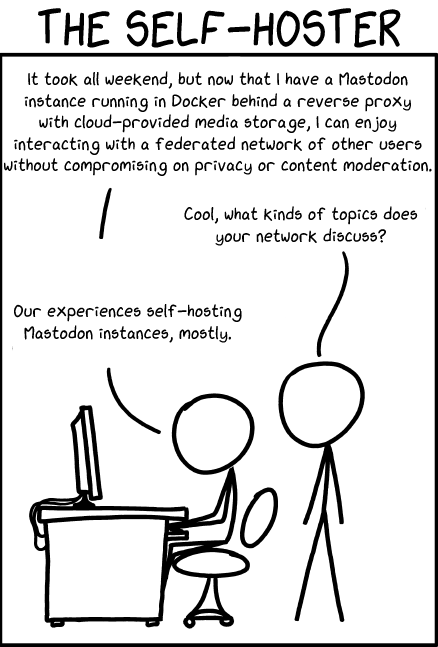These suggestions are essentially the same as other privacy and libre focused recommendations.
ericjmorey
joined 2 years ago
nearly every person that creates a lemmy account, is active
This is false. There's about a 10:1 ratio of Lemmy accounts registered to lemmy accounts posting comments.
I also did not create this.
Randall Monroe has provided me with weekly nibbles of entertainment for nearly 2 decades. But this was inspired by his style, not created by him.
view more: next ›

This seems too black and white a prognosis. I think it's not a popular method of funding development because the sponsorship/patronage method seems like it already does a better job of providing stability without making a transactional relationship.